Field work began this week on Torrens Island deploying potato starch structures (BESE) as a potential aid to seagrass recovery.
Dr Alice Jones, The Future Coast Lab, University of Adelaide with local and interstate colleagues, and some volunteers from FPR and Flinders Ports, has been laying out BESE (Biodegradable EcoSystem restoration Elements), as shown below, with seagrass cores to be transplanted into the structures.
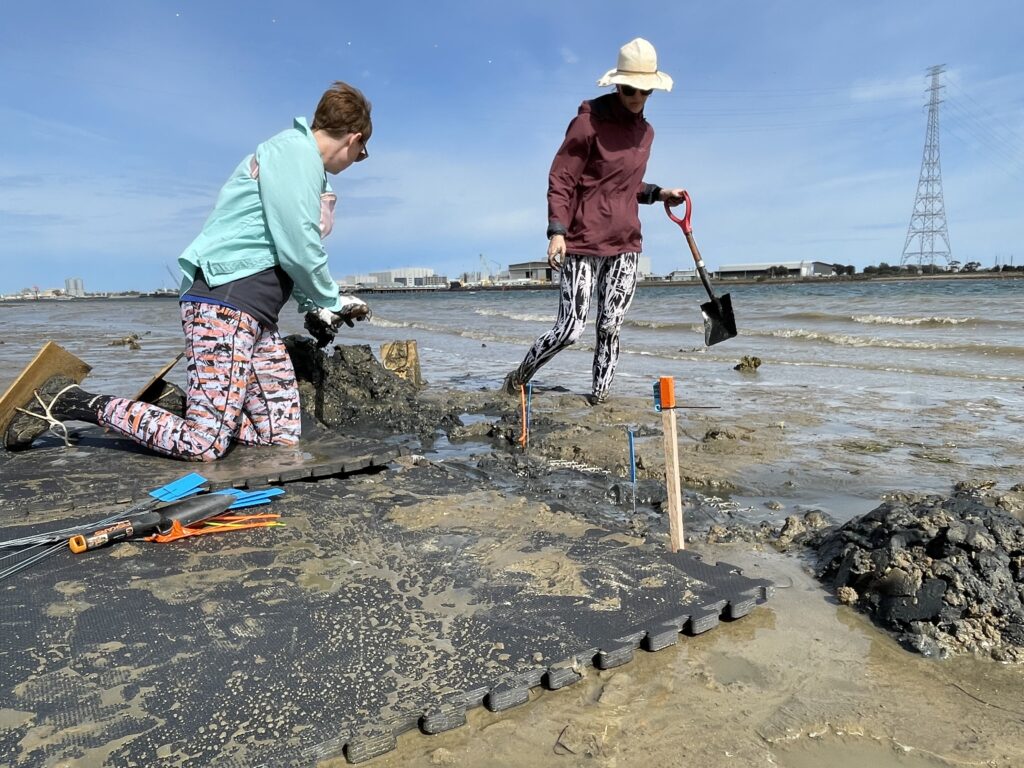
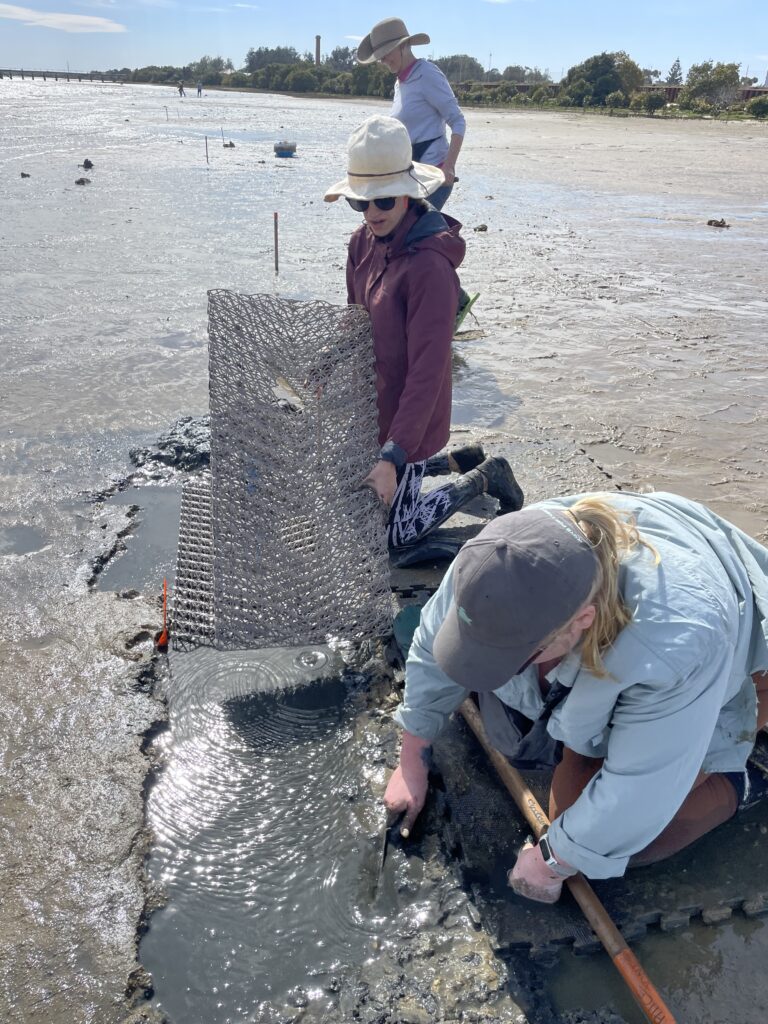
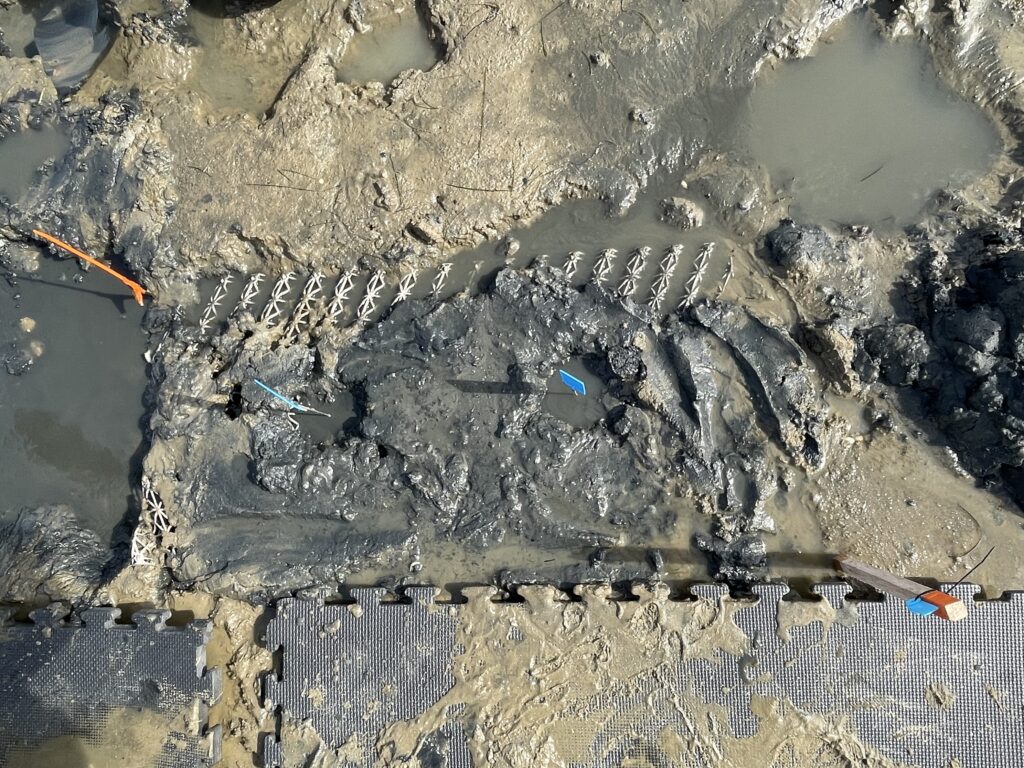
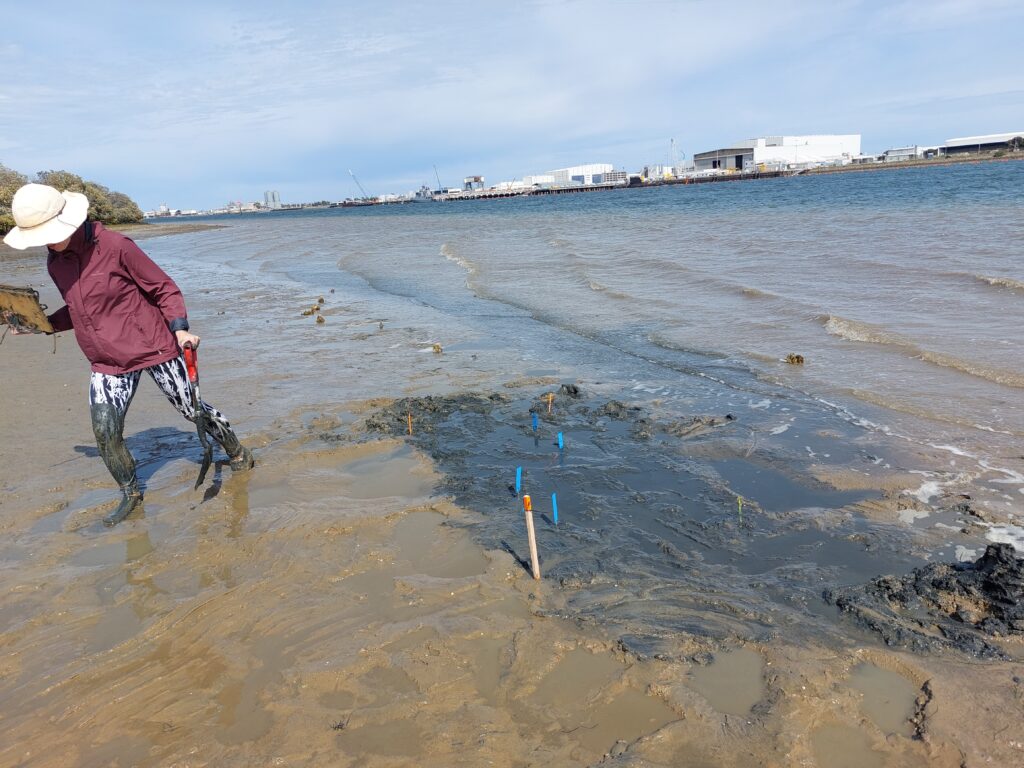
Alice is being supported in her research by University of Adelaide colleagues Lucy Bell Wood and Sophie Russell, and Melbourne- based researchers Dr Stacey Trevathan-Tackett and Sabrina Olsson.
This seagrass restoration trial, south of the Quarantine Station on Torrens Island, is part of a larger project by The Future Coast Lab, that is being funded by Green Adelaide through a Blue Carbon Futures Grant.
Entitled Recovering & Restoring Blue Carbon Ecosystems in Port River /Yartapuulti, the project aims to
- Assess and monitor how changes in vegetated coastal ecosystems (seagrass, mangrove and saltmarsh) correspond with changes in blue carbon storage at two sites
- Mutton Cove for saltmarsh and mangroves
- Eastern bank of Torrens Island for seagrass
- Investigate options for enhancing intertidal seagrass ecosystem recovery in Port River using biodegradable structures, and therefore assess the benefits of active restoration vs passive recovery.
FPR will be delighted to assist Alice and her team check on the progress of the transplanted seagrass cores, which are coming from a healthy patch of seagrass further south on Torrens Island. The elevation of the recipient sites is being matched to those of the donor sites.
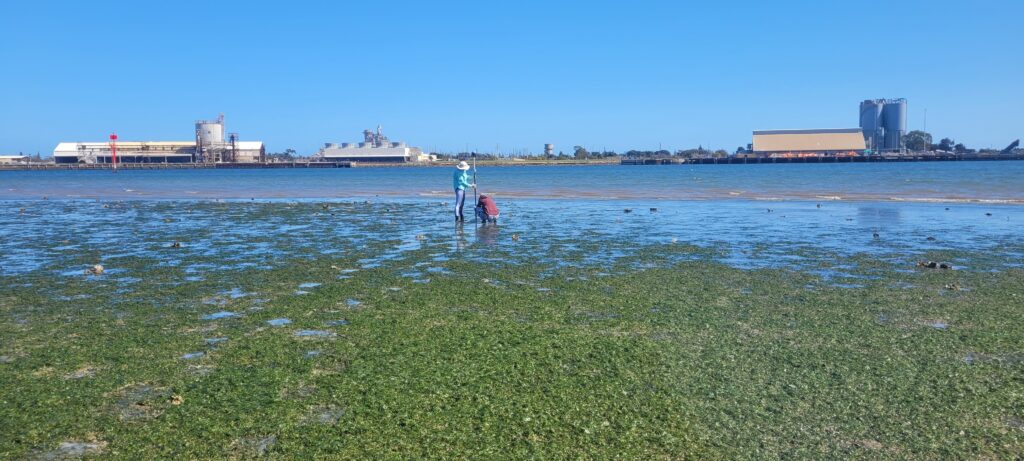

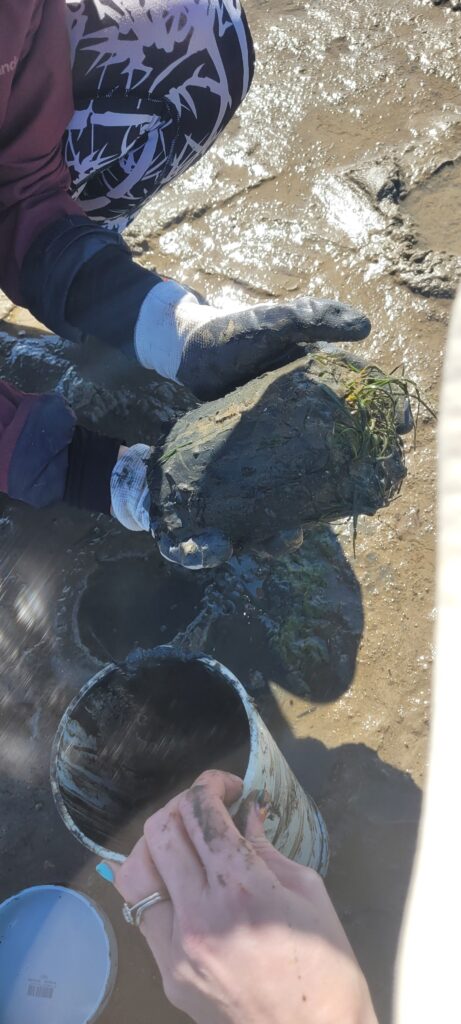
Trialing techniques for seagrass recovery in the Port River has become more urgent with the loss of seagrass along Torrens Island from heatwaves in Feb 2023 and March 2024.

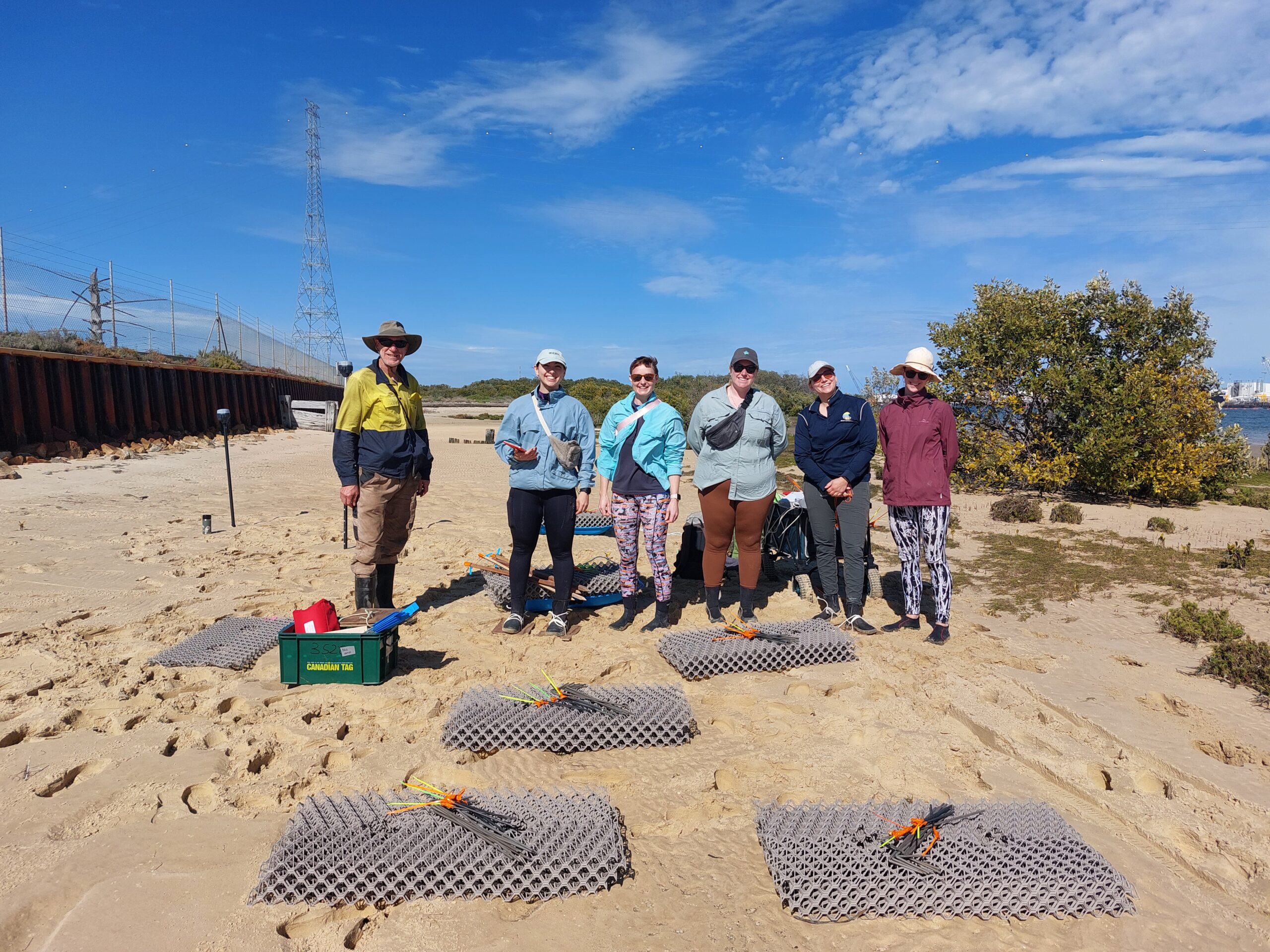
Leave a Reply